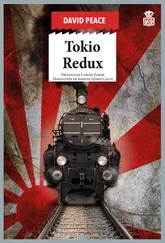The main research work at Harbin was under the direction of Lt. Gen. Shirō Ishii and apparently was conducted between the years 1936 and 1945 (there is some likelihood that Ishii will be apprehended shortly).
Colonel Naitō stated that the reason for planning offensive research was because the Japs expected that Soviet Russia might attack Japan with BW, especially in Manchuria. He states that there was some BW sabotage (inoculating horses with anthrax) in the northern part of Manchuria during 1944 or 1945 while the Japs were building the Peiangcheng-Heiho railroad. Further, he stated that Japan should be prepared for revenge in case the enemy used illegal warfare.
Naitō advised that the Emperor did not like the preparation for chemical warfare by the Japanese army or navy. Because of this the scale of research for chemical warfare was not permitted to be large. Since the General Staff was cognizant of the Emperor’s feeling on chemical warfare they insisted that the work on biological warfare should not refer to offensive preparations. They therefore referred to all work on BW as being purely defensive.
Naitō stated that General Headquarters made no attempt to begin active BW and did not plan to unless the enemy initiated this type of warfare. As an afterthought he stated that the circumstances during the last period of the war became such that the Japs were unable to start BW.
The following agents were listed by Naitō as having been studied: Plague, cholera, dysentery, salmonellas and anthrax. He stated that none of the filterable viruses were studied because of, ‘the difficulty to get them in mass’!
Colonel Naitō fears that all the experimental records at Harbin may have been burnt at the beginning of Russia’s sudden invasion. He stated, however, that if we succeed in securing one of the key personnel of the Harbin installation, it should be possible to obtain information concerning the work carried on there.
The following studies were made by the Army Medical College in Tokyo:
a) Studies on cheopis flea, zoological studies for the purpose of defense and tests of insecticides.
b) Studies on mass production of bacteria, in connection with possible sudden large-scale demands for immunizing agents to combat large cholera or plague epidemics.
c) Studies on some poisons which are hard to detect, for instance ‘fugu’ toxin.
d) Studies on keeping bacteria in a living state by the lyophile process.
Comment:I asked Naitō whether prisoners were ever used as experimental ‘guinea pigs’. Naitō ‘vows’ that this was never done.
Finally, it is gratifying to note, as you will see in my report, that our intelligence on Jap BW activities collected during the war was accurate insofar as the defensive organization was concerned.
I now plan to return to the United States and I look forward to seeing you again on your next visit to Camp Detrick.
Sincerely, Lt. Col. Murray Thompson.
DOCUMENT INSERT, ATTACHED TO LETTER:
SECRET
REPORT
OF
SCIENTIFIC INTELLIGENCE SURVEY IN JAPAN
September and October 1945
VOLUME V
BIOLOGICAL WARFARE (BW)
TABLE OF CONTENTS
SUMMARY OF FINDINGS
CONCLUSIONS
SUMMARY: BIOLOGICAL WARFARE (BW)
Responsible officers of both the army and navy have freely admitted to an interest in defensive BW.
Naval officers maintain that offensive BW was not investigated.
Information has been obtained that from 1936 to 1945 the Japanese army fostered offensive BW, probably on a large scale. This was apparently done without the knowledge (and possibly contrary to the wishes) of the Emperor. If this was the case, reluctance to give information relative to offensive BW is partially explained.
BW seems to have been largely a military activity, with civilian talent excluded in all but minor roles.
The initial stimulus for Japanese participation in BW seems to have been twofold:
a) The influence of Lt. Gen. Shirō Ishii.
b) The conviction that the Russians had practiced BW in Manchuria in 1935, and that they might use it again (the Chinese were similarly accused).
The principal BW center was situated in Pingfan, near Harbin, Manchuria. This was a large self-sufficient installation with a garrison of 3,000 by 1939-40 (reduced to 1,500 in 1945).
Intensive efforts were extended to develop BW into a practical weapon, at least eight types of special bombs being tested for large-scale dissemination of bacteria.
The most thoroughly investigated munition was the Uji type-50 bomb. More than 2,000 of these bombs were used in field trials. The Ha bomb, too, was exploded experimentally. Note that whereas the Uji bomb was an all-purpose munition, the Ha bomb was constructed and produced with only one purpose in mind — the dispersion of anthrax spores. The immediate effect was gained by shrapnel bursts with secondary considerations given to ground contamination. The statement has been made that a scratch wound from a single piece of shrapnel was sufficient to produce illness and death in 50–90 % of the horses, and in 90-100 % of the sheep exposed in experiments. More than 500 sheep were used in such field trials and estimates of horses similarly expended vary from 100 to 200.
Employing static techniques and drop tests from planes, approximately 4,000 bombs were used in field trials at Pingfan.
By 1939, definite progress had been made, but the Japanese at no time were in a position to use BW as a weapon. However, their advances in certain bomb types was such as to warrant the closest scrutiny of the Japanese work.
Japanese offensive BW was characterized by a curious mixture of foresight, energy, ingenuity and at the same time, lack of imagination with surprisingly amateurish approaches to some aspects of the work.
Organisms which were considered as possible candidates for BW, and which were tested in the laboratory or in the field included: all types of gastrointestinal bacterial pathogens, P. pestis (plague), B. anthracis (anthrax) and M. malleomyces (glanders).
Japanese defensive BW stresses:
a) Organizations of fixed and mobile preventive medicine units (with emphasis on water purification).
b) An accelerated vaccine-production program.
c) A system of BW education of medical officers in all echelons (BW Defensive Intelligence Institute).
The principal reasons for the Japanese failure were:
a) Limited or improper selection of BW agents.
b) Denial (even prohibition) of cooperated scientific effort.
c) Lack of cooperation of the various elements of the army (e.g. ordnance).
d) Exclusion of civilian scientists, thus denying the project the best technical talent in the Empire.
e) A policy of retrenchment at a crucial point in the development of the project.
CONCLUSIONS:
It is the opinion of the investigating officer that:
a) If a policy had been followed in 1939 which would have permitted the reasonably generous budget to be strengthened by an organization with some power in the Japanese military system, and which would have stressed integration of services and cooperation among the workers, the Japanese BW project might well have produced a practical weapon.
b) However, since the Japanese dreaded the United States’ capacity for retaliating in kind (i.e. BW) or with chemical warfare agents, it is most unlikely that they would have used a BW attack against American troops even if the weapon had been at hand.
c) The Japanese are fully aware of the reasons for the failure in their development of BW. It is extremely unlikely that they would repeat their mistakes.
SUPPLEMENT 1a, ATTACHED TO DOCUMENT:
Map indicating that the Japanese army had ‘water purification units’ attached to their 18th, 31st, 33rd, 49th, 53rd, 54th, 55th, and 56th Divisions stationed in Burma, with larger fixed field ‘water purification units’ at Rangoon and Mandalay.
Читать дальше












